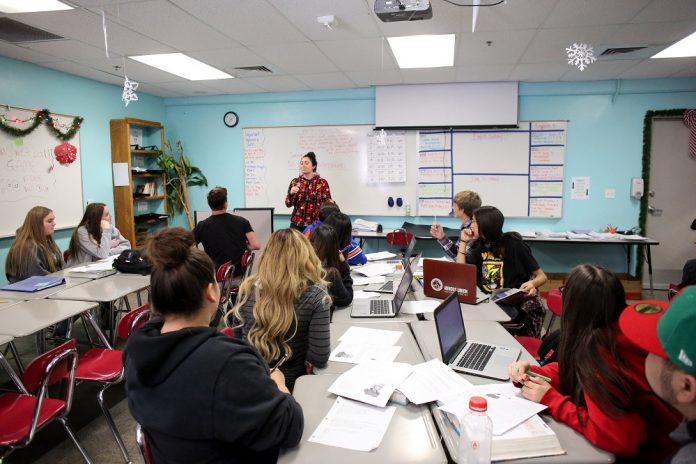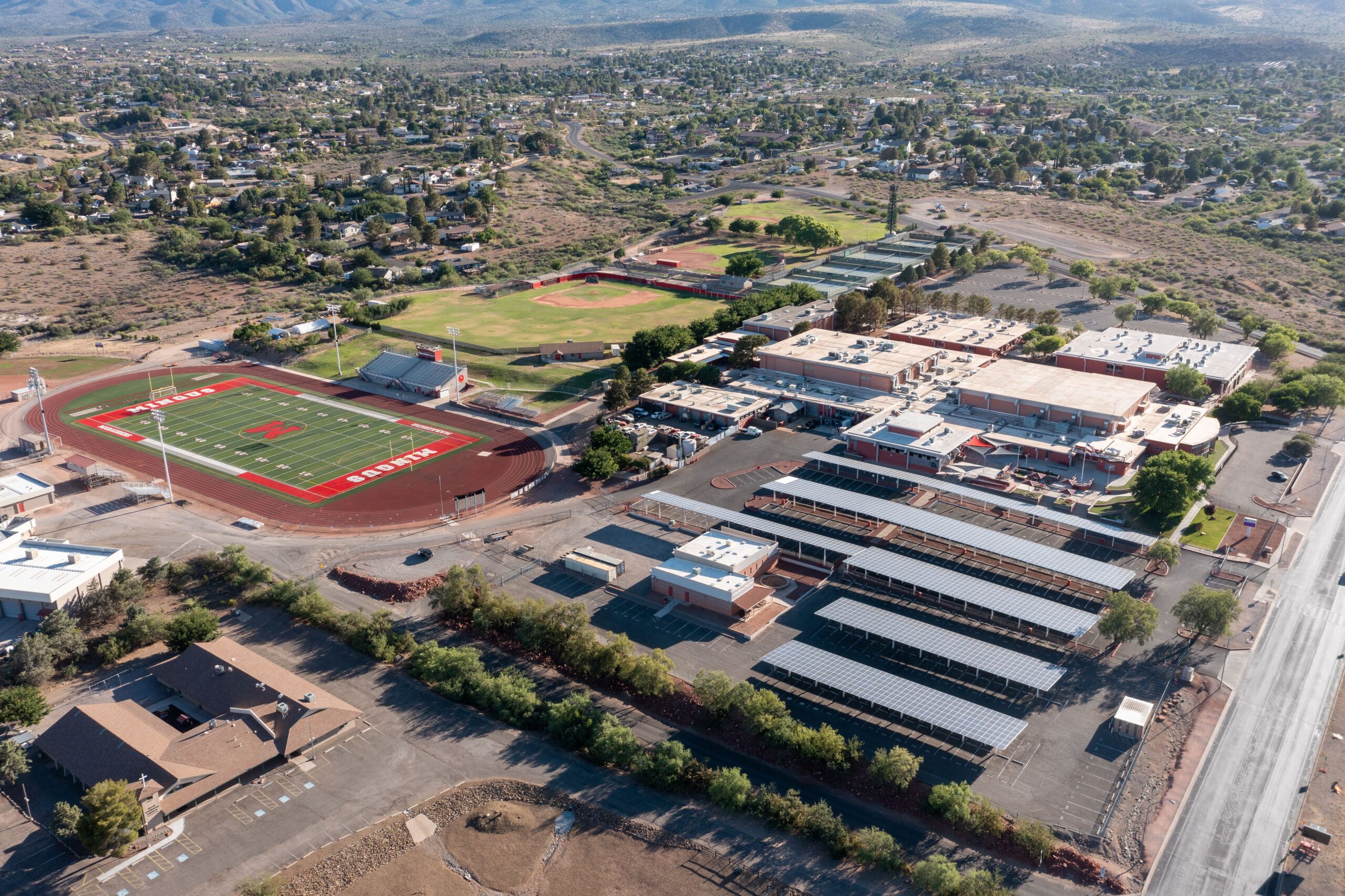Arizona continues to dwindle near — or at — the bottom of the list for teacher salaries, and Verde Valley educators aren’t excluded from the hurt of low pay and rising housing costs.
For example, the average salary of a Sedona-Oak Creek School District teacher is $39,302, according to a 2017 Arizona Auditor General report. The median home value in Sedona is $404,400, according to latest data from the United States Census Bureau.
School funding is the largest part of the Arizona budget at $4.2 billion of its overall $9.8 billion for kindergarten through 12th-grade education. But the state is using a 35-year-old funding formula created before charter schools were part of the equation.
Capital costs [i.e., building construction, textbooks, computers, etc.] have also been underfunded for years, so a leaking roof could end up costing both students and teachers. With little help from the state, school districts are left to come up with creative solutions to best serve students as well as pay teachers as fairly as they can.
For every public school in the Verde Valley, the majority of funding is spent in the classroom. Low pay affecting school employee morale has been the subject in many of SOCSD’s strategic planning meetings as well as a key talking point during consolidation talks between Cottonwood-Oak Creek School District and Mingus Union High School District.
According to the latest Auditor General report, Mingus teachers have one of the highest public school teacher salaries in the Verde Valley with an average of $45,746. However, that is still lower than the state average, which is $46,384.
When it comes to comparing average salaries by district, however, it’s really comparing apples to oranges, said SOCSD director of curriculum and instruction Deana DeWitt.
“Salary average comparisons are only relevant if you are comparing apples to apples … teachers with the same level of education and experience,” said DeWitt, who is also a former COCSD and MUHSD educator.
Because MUHSD is a unified high school district, teachers may have more experience as well as specialized or advanced degrees, which plays into the average.

“Districts with more veteran teachers will have higher average salaries,” DeWitt said. “It is better to compare the salary schedules.”
Salary schedules are used by each district to determine what to pay teachers based on factors such as education, level of experience and per-pupil basis.
Step by Step
SOCSD, Camp Verde Unified School District and Clarkdale-Jerome School District all follow a step system based on education level and experience. A CVUSD teacher with a bachelor’s degree and no prior teaching experience would have a starting salary of $32,988, according to CVUSD’s salary schedule. That salary would increase to $33,376 if the teacher had 12 credits toward a master’s degree.
“The philosophy built into the schedule is to attract new teachers while encouraging continued education and longevity,” said CVUSD business manager Steve Hicks in an email. “When a new hire comes into the district with experience, we give them a certain amount of years of experience, based on our current district practice.”
The formula is similar at SOCSD. According to its salary schedule, the starting salary for a teacher with a bachelor’s degree and no prior teaching experience would be $33,178. That salary would increase to $34,046 if the teacher had 12 credits toward a master’s degree.
Prop 301 Money
It is important to note that these salary schedules do not include funds from Proposition 301 — a 0.6-cent voter-approved sales tax — which is sometimes paid out on top of base salaries. Hicks said CVUSD teachers use 301 money as a boon to teacher salary.
“You can add approximately $6,500 to those salary schedule figures,” he said. “301 money varies each year, but it has been around that amount for the past few years.”
According to SOCSD’s salary schedule, Proposition 301 funds average approximately $5,000 a year.
“Some people see it as a bonus,” DeWitt said. “I believe that the intent of the Arizona voters is to increase the income of our teachers who are sorely underpaid, particularly teachers who deserve it.”
At CJSD, there are additional amounts teachers can earn on top of their base salary, according to CJSD Business Manager Kristy Aston.
“Although the salary schedule stops at $56,563, if a teacher has reached the bottom [the cap] of the salary schedule they receive an increase of $800 each year instead of a step,” she said. “This way teachers continue to see an increase, but it is less than a normal step.”
Aston said there are many teachers at CJSD who have been at the school for more than 20 years who receive longevity pay, which is an extra 5 percent of the base salary starting in their 21st year.
Getting the Point Across
COCSD and MUHSD both use a cell point system, which is a newer approach, said DeWitt. With the cell point system, a base salary is increased by certain increments based on points. Points are determined by experience value, education value and unique qualifications or endorsements.
At COCSD, the starting salary is $32,320 and increases by $440 increments based on points. MUHSD teachers have a starting salary of $34,000 with $600 increasing increments. COCSD business manager David Snyder said some of the salary discrepancies between the two schools is based on per-pupil funding.
“We are funded on a weighted per-pupil basis, with high school students receiving a higher weight than elementary students,” he wrote in an email. “For example, school districts receive a base level amount of $3,729.31 per pupil, and then that amount is multiplied by the weight.”
Snyder said COCSD average class sizes are smaller to serve the needs of younger students.
“The higher student to teacher ratio would lead to more funds available for salaries,” Snyder said.
Decreasing enrollment has also made it difficult to institute larger salaries, he said.
“COCSD convenes a Budget Committee each spring made up of certified and support staff from all campuses and departments to discuss salaries and benefits for the next fiscal year,” he wrote in an email. “As full inflation funding has been reinstated by the Legislature with the Budget Committee, with full support from the Governing Board, has made a priority of at a minimum passing on the inflation funding to our staff.”
Kelcie Grega can be reached at 634-8551, or email kgrega@larsonnewspapers.com



